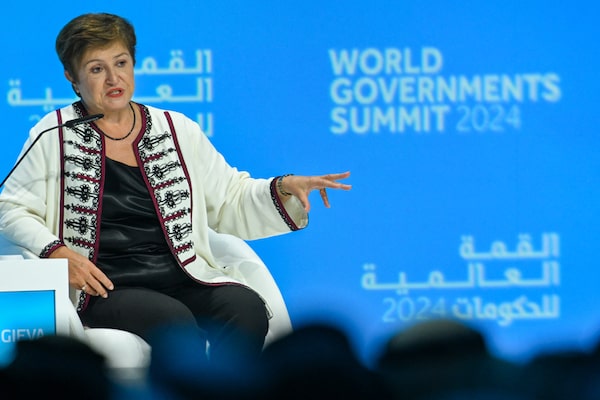
IMF managing director Kristalina Georgieva addresses the World Governments Summit, in Dubai, on Feb. 12.RYAN LIM/Getty Images
Russia’s war economy is in for tough times due to the outflow of people and shortages of technology, the International Monetary Fund’s managing director Kristalina Georgieva said on Monday, even as high military spending boosts economic growth.
The economy rebounded sharply from a slump in 2022, annual data showed last week, but the growth relies heavily on state-funded arms and ammunition production and masks problems that are hampering an improvement in Russians’ living standards.
Georgieva, speaking to CNBC, said the IMF’s forecast of 2.6 per cent gross domestic product (GDP) for Russia this year was a sign that the Russian state, which built up sizeable buffers over many years of fiscal discipline, was investing in the war economy.
Today in Russia, military production goes up and consumption goes down, she said.
“That is pretty much what the Soviet Union used to look like – high level of production, low level of consumption,” she said.
Russia’s economy grew 3.6 per cent in 2023 after a revised 1.2 per cent contraction in 2022.
Russia-based economists have highlighted the poor quality of economic growth, pointing out that missiles and shells may contribute to higher GDP but offer limited benefit to the population.
“I actually think the Russian economy is (in) for very tough times because of the outflow of people and because of the reduced access to technology that comes with the sanctions,” Georgieva said.
“So although this (2.6 per cent) number looks like a good number, there is a bigger story behind (it) and it’s not a very good story.”